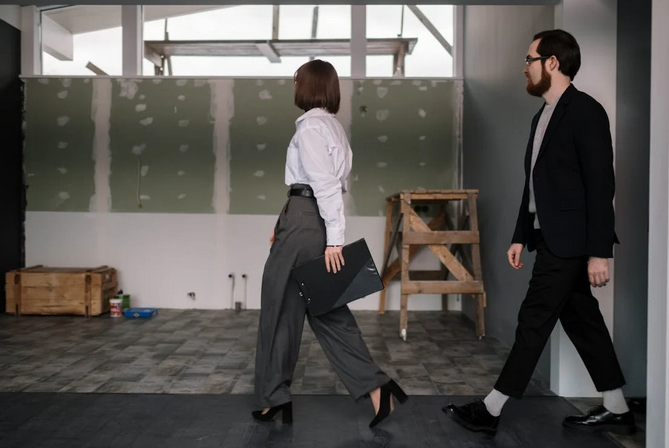Why an Office Renovation Can Revitalize Your Business

There comes a time when even the brightest office starts to lose its spark. The paint dulls, the layout feels cramped, and the once-energized atmosphere starts to fade. That’s when a proper office renewal can work wonders. It’s not just for the look of your workspace but for the people inside it.
A well-thought-out renovation can breathe life into tired offices, improving morale and productivity in ways you might not expect. An updated office doesn’t have to mean gold walls and fancy furniture. It’s about creating an environment that inspires, supports workflow, and reflects your business’s current identity.
Function and Style
It’s easy to get caught up in paint swatches and Pinterest boards, but before you pick colors, consider how your team actually uses the space. Are there enough meeting zones? Do people have areas where they can focus without interruptions? Function should always lead the way, or you’ll end up with a pretty office that frustrates everyone. Once the practical side is nailed down, then bring in the design flair. The goal is harmony between beauty and efficiency. An office can look stylish while still serving a real purpose. Choose colors and layouts that keep people alert but comfortable. A clever renovation combines both, but without wasted corners or underused spaces.
Lighting: The Secret Ingredient to Energy and Mood

You might underestimate how much lighting affects work. Harsh overhead lights can make people sluggish, while dim rooms drain focus. Natural light should be your top priority during renovation. It’s free, it improves mood, and it makes spaces look larger and cleaner instantly. If natural light is limited, play with smart lighting systems that adapt to different times of day. Soft white light in the morning can energize, while warmer tones later help maintain calm. It’s a simple fix that brings an instant lift to productivity, and it’s often cheaper than a complete redesign.
Ergonomics: Comfort That Pays Off
A great office is never just about looks but about how it feels to sit, stand, and move in it. Ergonomic furniture is no longer a luxury; it’s a must. Chairs that support posture and desks that adjust height can prevent fatigue and health issues over time. That means fewer sick days and happier employees. It’s also worth thinking about spatial flow. Employees shouldn’t have to weave through a maze to reach the printer or grab a coffee. Clear pathways and organized work zones save time and reduce stress. A thoughtful setup can make a big difference in how smoothly each day runs.
Company Culture Through Design

Your office is the face of your business culture. A renovation gives you the perfect chance to let that personality shine. If collaboration drives your brand, build open spaces where ideas can bounce freely. If privacy is key, consider modular designs that balance solitude and teamwork.
Add touches that reflect your story, like a mural showcasing your milestones or a cozy lounge for creative breaks. The goal isn’t extravagance but authenticity. Employees feel more connected when their workspace aligns with the company’s character. That emotional connection is the hidden powerhouse behind higher engagement.…




 One of the main problems with permaculture is that it can be expensive to set up. If you want to create a truly sustainable permaculture system, you will need to invest in some expensive equipment and materials. This includes things like solar panels, wind turbines, and rainwater catchment systems. You may also need to hire someone to help you with the initial setup of your permaculture system. If you don’t have the money to invest in these things, permaculture may not be right for you.
One of the main problems with permaculture is that it can be expensive to set up. If you want to create a truly sustainable permaculture system, you will need to invest in some expensive equipment and materials. This includes things like solar panels, wind turbines, and rainwater catchment systems. You may also need to hire someone to help you with the initial setup of your permaculture system. If you don’t have the money to invest in these things, permaculture may not be right for you. Like any type of farming, permaculture systems come with some risks. For example, if you are growing food, there is always the risk of crop failure. If you are raising animals, there is always the risk of disease. These risks can be mitigated by diversifying your permaculture system and by having a backup plan in place, but they are still something to be aware of. It is important that you are prepared to deal with these risks before starting a permaculture system. This ensures that you are not putting yourself or your family at risk.
Like any type of farming, permaculture systems come with some risks. For example, if you are growing food, there is always the risk of crop failure. If you are raising animals, there is always the risk of disease. These risks can be mitigated by diversifying your permaculture system and by having a backup plan in place, but they are still something to be aware of. It is important that you are prepared to deal with these risks before starting a permaculture system. This ensures that you are not putting yourself or your family at risk.


